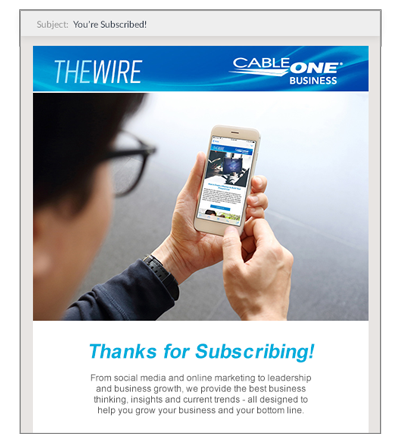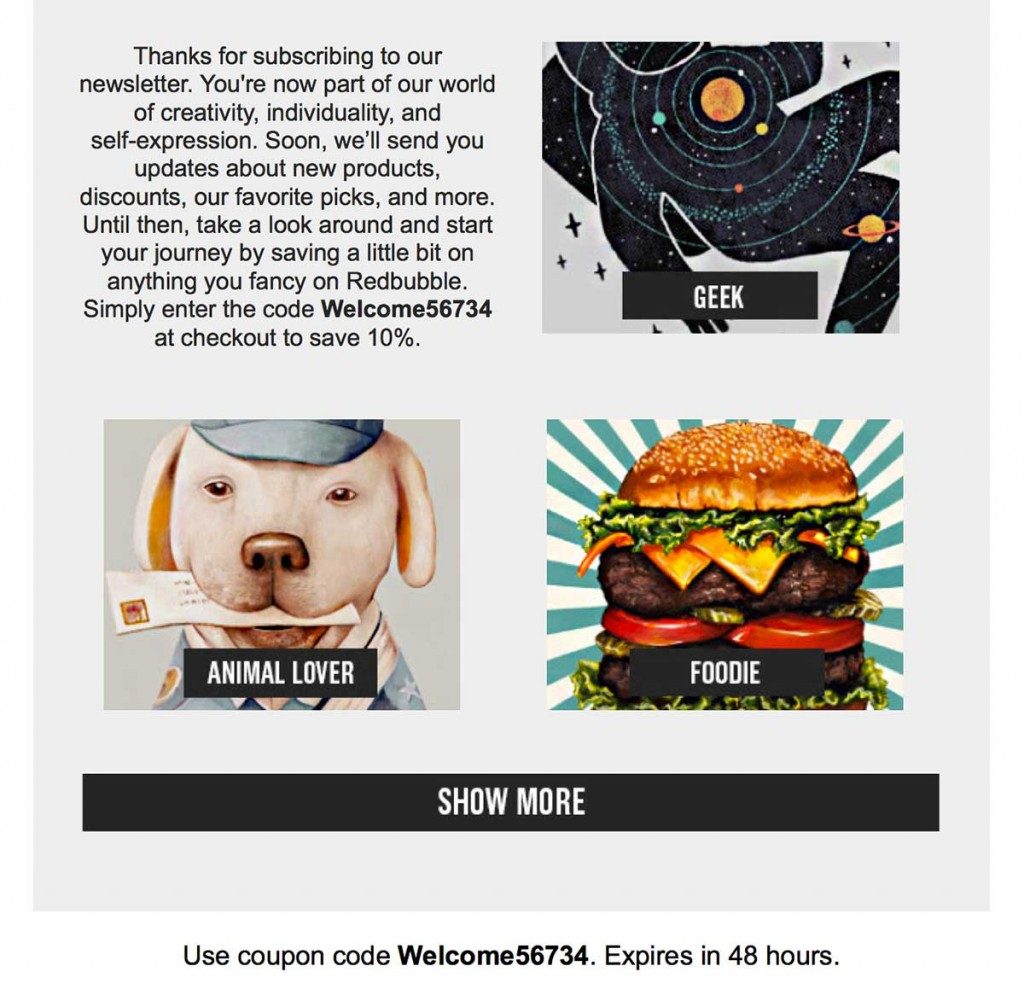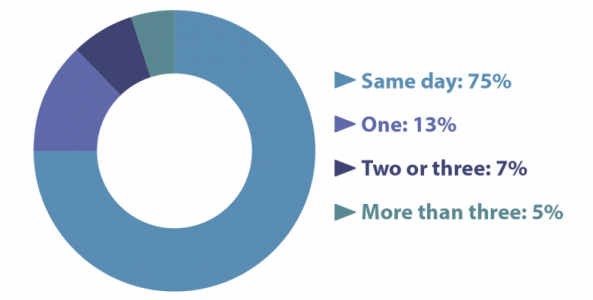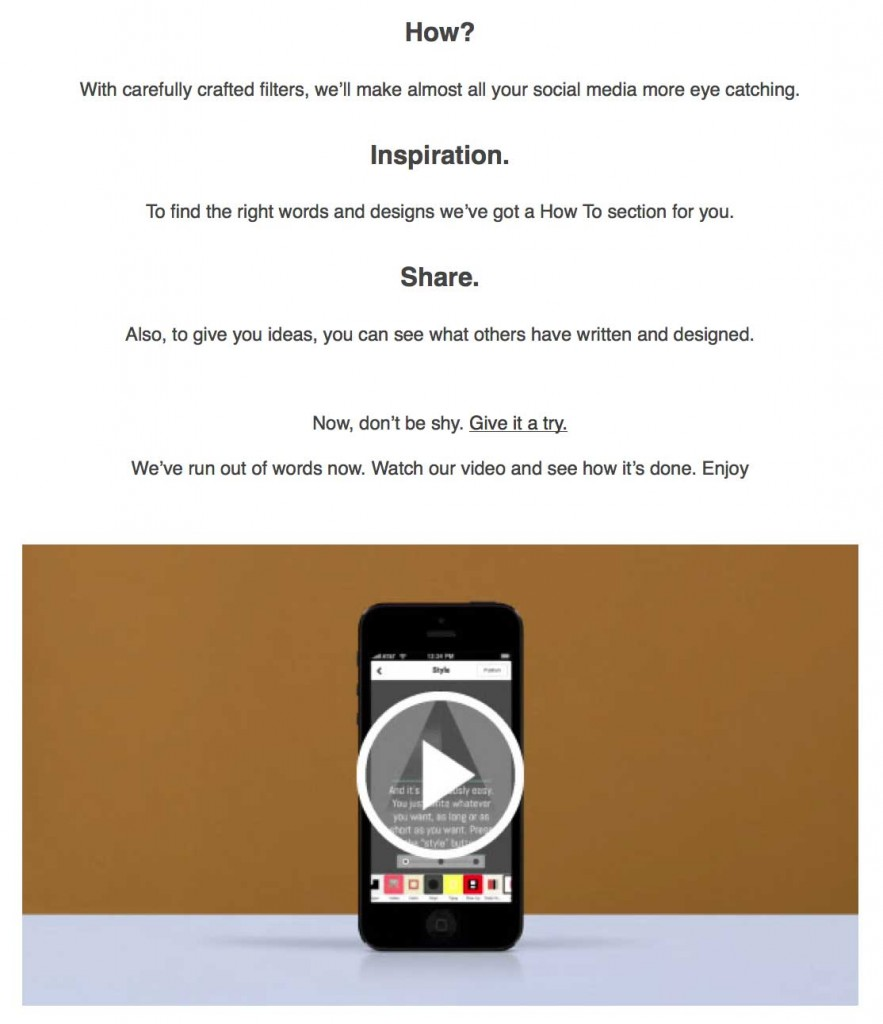Why Every Brand Needs a Welcome Email in Their Strategy
Your email marketing campaign is your most effective opportunity to communicate with both your prospects and customers. Throughout your campaign, you are supposed to send provocative messages that educate your subscribers, inform them about upcoming promotions and events, and inspire them to take action.
However, did you know that you could start your email marketing campaign on the wrong foot by not sending a welcome email? If you're skeptical about the idea that sending welcome emails are important, keep reading to find out otherwise.

What is a Welcome Email?
A welcome email is simply a greeting to a new subscriber that thanks them for signing up to an email list. The purpose of this email is to formally welcome a new subscriber to your email list.
Traditional welcome emails inform a subscriber about what they should expect now that they will be receiving emails from your brand. Welcome emails are also usually personal and written by a CEO or other type of business leader.
Essentially, welcome emails establish the first impression of your brand and they are much more important than you may think.
Why is a Welcome Email Important?
Alright. It's now time to bring out the statistics.
Clearly, welcome emails are in high demand from individuals. 74% of people expect to receive a welcome email when they sign up for an email list. In addition, businesses that send welcome emails enjoy a 320% increase in revenue instead of promotional emails.
There are a wide variety of reasons why this is. To begin, welcome emails are instrumental in establishing the first impression among new subscribers.
When you receive a new subscriber, this person has essentially trusted you with a bit of their most personal information - their email address. As such, you won’t get anywhere with your campaign by treating this privilege as a pure marketing opportunity.
Sending welcome emails enables businesses to define the first steps for new subscribers. Basically, a welcome email will prompt a new subscriber to:
- Read new blog posts from the sender.
- Download a new whitepaper or e-book from the sender.
- Check out new products and services
- Take advantage of promotions and deals
- Reach back out with additional questions.
For this reason, you should develop a central strategy to craft brilliant welcome emails for your audience. Doing so will ultimately make them more likely to do business with you when the time comes.
If you want to learn more about how to create effective welcome emails, then read on to receive in-depth information on the best tips for improving your campaign.
How Can a Welcome Email Improve My Campaign?
Knowing that a welcome email probably isn't enough to make you want to implement it in your email marketing campaign. But, if you knew exactly how it could benefit you, you might strongly consider.
The major benefit of creating a welcome email for your brand is its open rate efficiency. As it was previously mentioned, welcome emails are something the majority of subscribers expect to recieve.
However, there is more to it than that. A welcome email can impact the entire performance of your campaign because it kick starts your sales funnel.
If you're like many businesses, you have a defined sales funnel that serves as a roadmap to guide prospects from a level of interest into a committal to purchase.
One popular sales funnel that content marketers use is the "Buyer's Journey". Similar to that concept, you should know what your sales funnel is, whether most of your leads are derived from consultation or through search engines.
In any case, the beginning of most sales funnels starts at an interest level. When a person signs up for your email list, they are truly interested in what you have to offer.
So, what do many brands do with this blatant sign of interest?
They forgo a welcome email and get straight to promoting their products and services. It's important to remember that people receive several emails a day, which are usually mostly promotions.
To avoid your email being ignored and sent straight to a spam folder, you'll have to be more creating at getting your subscribers' attention. After all, even if they subscribed to your email list, you'll still have to do all of the hard work of converting them.
The first step of conversion lies in sending a welcome email. For the reasons above, a welcome email sets the first impression and generally tells your new subscriber what to expect.
Once they know what to expect, the subscriber will make their own decision whether to continue reading your emails, ignore you, or unsubscribe. So, a welcome email does more than creating the first impression, it also refines interested leads into engaged ones.
Therefore, if you skip out on sending a welcome email, you miss the chance of telling your subscribers that you're going to send them some promising content.
While a welcome email is only the beginning of the long and complicated conversion process, it's arguably the most important aspect. If you're interested to learn more about how a welcome email can help you achieve a higher return from your investment, continue reading below.
How Can a Welcome Email Net a Positive ROI?
It has been established that a welcome email is not only important, but it can also impact your entire campaign. While that's great, you have to be mindful of how your campaign will work within your budget.
If not, you'll receive small success at a great loss of time, effort, and profit. Fortunately, sending a welcome email is beneficial toward securing a positive ROI from your campaign.
To explain how, let's say that your business uses a third-party email software (like Firedrum) to manage your email campaign. You may spend about $25 for each welcome email you send if you're using third-party sources and freelancers to create the graphics.
If you notice that the open rate for your welcome emails are increasing and you're receiving some conversions, you'll automatically recoup the losses of sending several welcome emails.
This is especially true if you are providing high-end products and services. As you can see, sending a welcome email is an investment because the subscriber you're sending it to may or may not commit.
However, if they commit, their purchase would make sending several welcome emails worthwhile. Now, let's get down to the basics of creating the perfect welcome email.
Welcome Email Strategy #1: Make it Timely
Sending a welcome email at the right time makes all the difference in how it will be effective. Welcome emails work well because you'll be sending them to a subscriber when their interest is at its peak.
If you wait a few days later, their interest will wane until they choose not to read your emails anymore, resulting in low engagement rates. To give you an idea of how important it is to send a timely welcome email, take a look at this graph from Return Path.
Notice that after the same day, the open rate for the welcome email decreases significantly. This is a missed opportunity you can avoid just by being prompt with sending a welcome email when you have a new subscriber.
Welcome Email Strategy #2: Create an Engaging Subject Line
This is a no-brainer when it comes to developing an effective email campaign, and that's all the truer when designing a welcome email. To put it simply, welcome emails perform better when they are able to stand out in crowded inboxes.
Many marketers make the mistake of using the word "Welcome" in their subject line. To show you how ineffective that method is, here is a screenshot of a typical inbox.

How many of the same subject lines do you see? You can't convince a person to skip other over emails to open yours if your welcome email isn't unique.
This is why it's important to brainstorm and create engaging subject lines that will grab and hold your subscribers' attention.
Welcome Email Strategy #3: Use a Greeting
Simple and personal emails are highly effective email campaign techniques. If your email sign up forms gather the first and last names of your subscribers, your welcome email is the perfect time to use them.
The first thing you should include in your welcome email is your greeting. Often times, sending a basic greeting followed by a welcome from a real person in your company is a great way to kickstart your conversion process.
Welcome Email Strategy #4: Tell Them What to Do Next
The whole purpose of your email campaign isn't to wait for your subscribers to take action. That's your job. Therefore, don't send a welcome email and expect them to wait on your next newsletter.
Give your subscribers a clear idea of what to do next. Although it's not recommended that you promote your services and products right away. You can do it if your approach is creative and not obnoxious.
For example, take a look at this welcome email from Noteagraphy.
This welcome email was sent for the purpose of giving subscribers information about their app. As you can see, Noteagraphy didn't just leave the reader with a "thank you".
They included a subtle call to action, prompting the reader to take action. You can literally see that the call to action is in a smaller font than the rest of the other content.
What this welcome email also did great was adding another opportunity for the reader to engage with them. They included a video to further teach them how to use the app.
Therefore, if the first call to action wasn't successful, the video could have converted the reader.
Welcome Email Strategy #5: Give Them a Gift
Welcome emails are the perfect time to give your subscribers a gift and show them that you care. Usually, these gifts are discounts on future orders or free content.
The best welcome emails don't just give away free stuff. They use that opportunity to promote their other products or services. For example, take a look at this welcome email from RedBubble.

Although a coupon code was included in the email, RedBubble indirectly advertised their other products right above the coupon code. This ensures that the reader will at least glance at the other products before getting what they want.
Welcome Email Strategy #6: Ask Subscribers to Follow Your Social Media Networks
Notice that this section doesn't say promote your social media networks. So many businesses include their social media network buttons at the bottom of their emails, but no one will click on them if they aren't prompted to do so.
For this reason, simply ask your subscribers to follow you on social media. To get more creative, add an incentive to encourage them to do it. The best incentives are exclusive, so if you're creating great social media content, add in a teaser in your welcome email that indicates that the reader can (for example) find other great deals.
Your email list is arguably your greatest resource for converting leads. Create more sales opportunities for your business by cross-promoting your social media channels.
Welcome Email Strategy #7: Ask Subscribers to Add You to Their Contact List
One of the worst things that can happen is having a subscriber sign up for your email list, only for your emails to be sent straight to their spam folder.
Not even the most experienced email campaign experts can understand the arbitrary methods email providers use to identify spam. Therefore, it's important to be proactive and ask your subscribers to add you to their contact list.
This is especially true if you're in the B2C space. Businesses tend to have highly-engaged spam filters that can be triggered off your email address or email copy.
Improve your delivery rates by including a sentence at the bottom of your welcome email that prompts a reader to add you to their contact list.
Welcome Email Strategy #8: Include an Unsubscribe Link
Believe it or not, having an unsubscribe link at the bottom of your welcome is beneficial for both you and your subscribers.
First and foremost, you're legally mandated to follow this practice, as it's a requirement for CAN-SPAM and GDPR. Second, you must make it simple for people to unsubscribe from your email list any time they want.
However, if someone isn't interested in what you have to offer, why keep them on your email list. Not only is maintaining the presence of inactive subscribers harmful for your delivery rate, but it's also a waste in time and effort.
If you don't have time to create a win-back campaign for an inactive subscriber or if they have explicitly stated that they don't want any more emails from you, give them the chance to unsubscribe.
Welcome Email Strategy #9: Ask Subscribers to Refer a Friend
Word of mouth is still one of the most powerful forms of advertising, and it can be used in your welcome email. If you have subscribers that are truly amazed at your brand and the email content you're sending, give them the opportunity to refer their friends and family.
Obviously, if someone you know refers something to you, it carries more weight than any promotion. You may not receive a huge amount of referred subscribers, but you can count on referred subscribers to be more engaged and likely to purchase from you in the future.
Welcome Email Strategy #10: Find Out What They Want
Information is priceless. To that end, you can use your subscriber's interest to find out what they want from your brand.
You can do this by simply creating a welcome email that asks a subscriber what they want, then send automatic emails based on their choice.
Alternatively, you can also create surveys and questionnaires and then send a more personal response based on the answers you receive. Ideally, it's important to understand what your subscribers want so you can accommodate them.
Accommodation leads to engagement, and engagement eventually leads to a purchase.
Contact a Representative
Putting together an effective welcome email is a lot of work, but it's wholly beneficial to your entire email campaign. By following the tips above, you can build the perfect welcome email that will inspire your subscribers to press action.
Want to discuss more ways to use a welcome email campaign? Set up a time to talk to our welcome email strategists to design a campaign that will bring real results.




